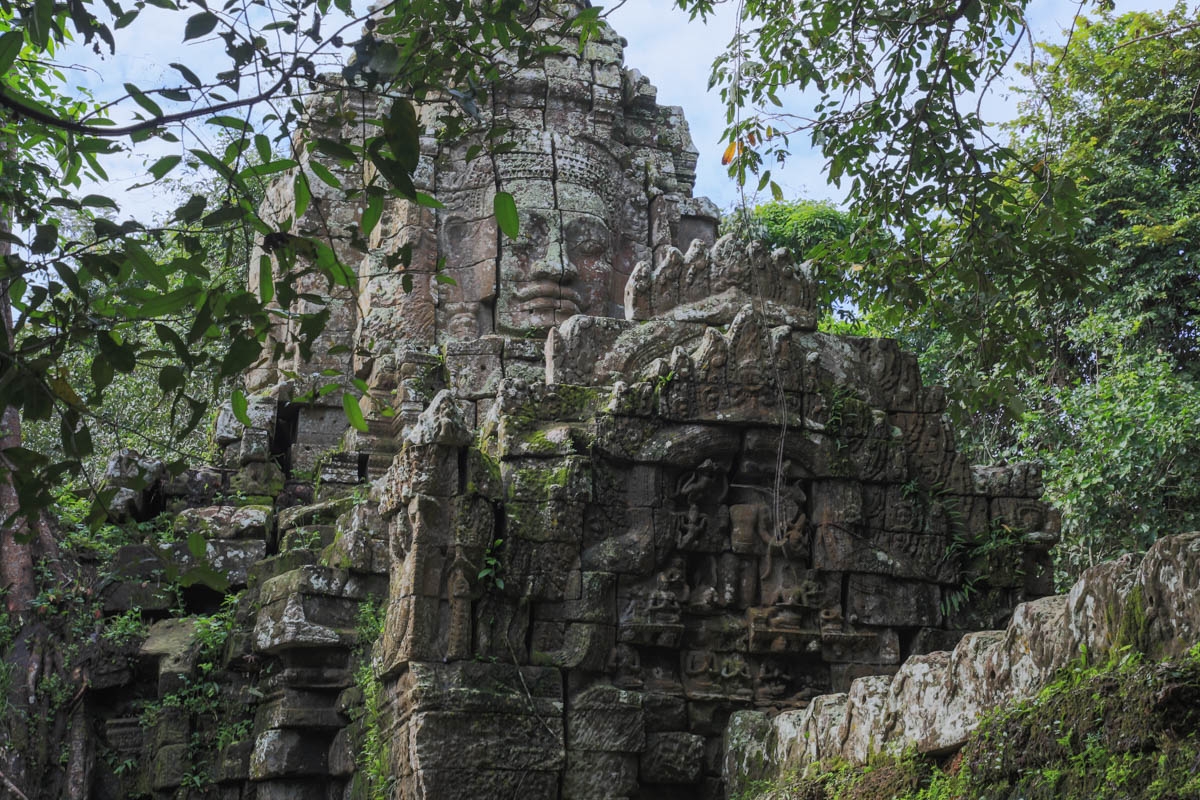Ta Som (Khmer: ប្រាសាទតាសោម) is located just east of the Jayatataka Baray inside Angkor Archaeological Park. Whilst being one of the smaller temples it’s still highly recommended to visit. It was built during the 12th century under the reign of Buddhist King Jayavarman VII and you will surely see the likeness to other temples of the era such as Preah Khan, Banteay Kdei, and Ta Prohm to name some.
Visiting Ta Som
Located 30 min (17 km) northeast of Siem Reap city and 15 min from Angkor Wat, Ta Som is an easy and peaceful temple to visit. The temple is entered from the western gate, has a flat layout, is easy to navigate and the total distance from the western outer gate to the eastern outer gate is only 200m.
Highlights include that special lost temple charm similar to Ta Prohm but on a slightly smaller scale including its beautiful gopura with the smiling faces and especially so the “jungle charm” of the outer eastern gate. Take note of some of the unusual Apsaras, well-preserved Dvarapala, and the pediments and also the umounted pediments resting at ground level.
The temple is open from 7:30 am to 5:30 pm and it’s recommended to spend thirty minutes to an hour here. There are some drink stalls to the left near the western entry and toilets. Entry is included in the Angkor Pass and this temple is located on the Grand Circuit.
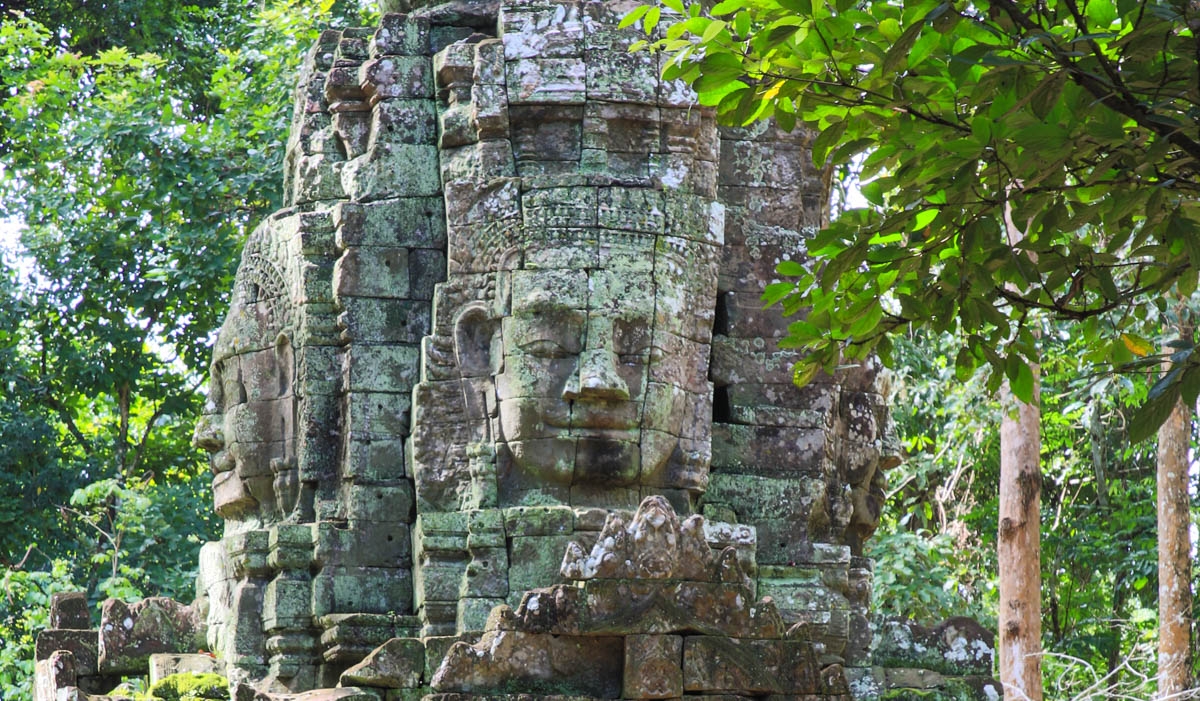
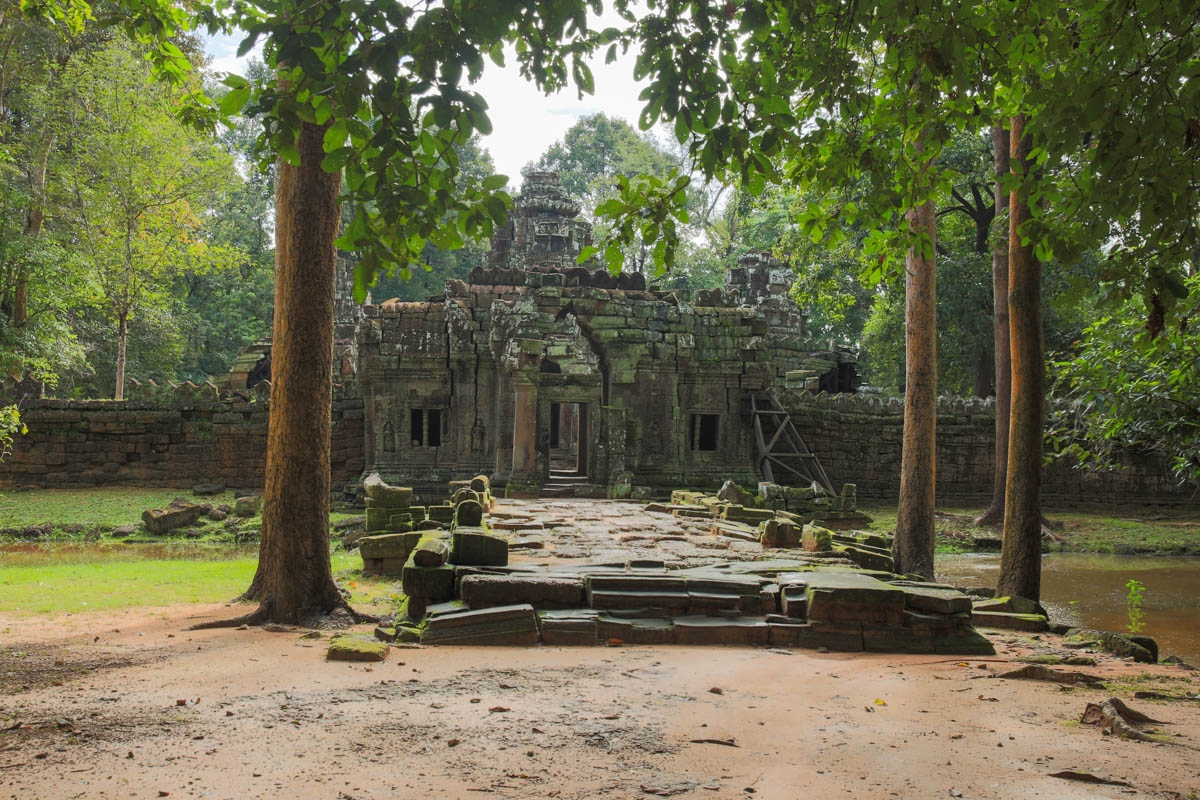
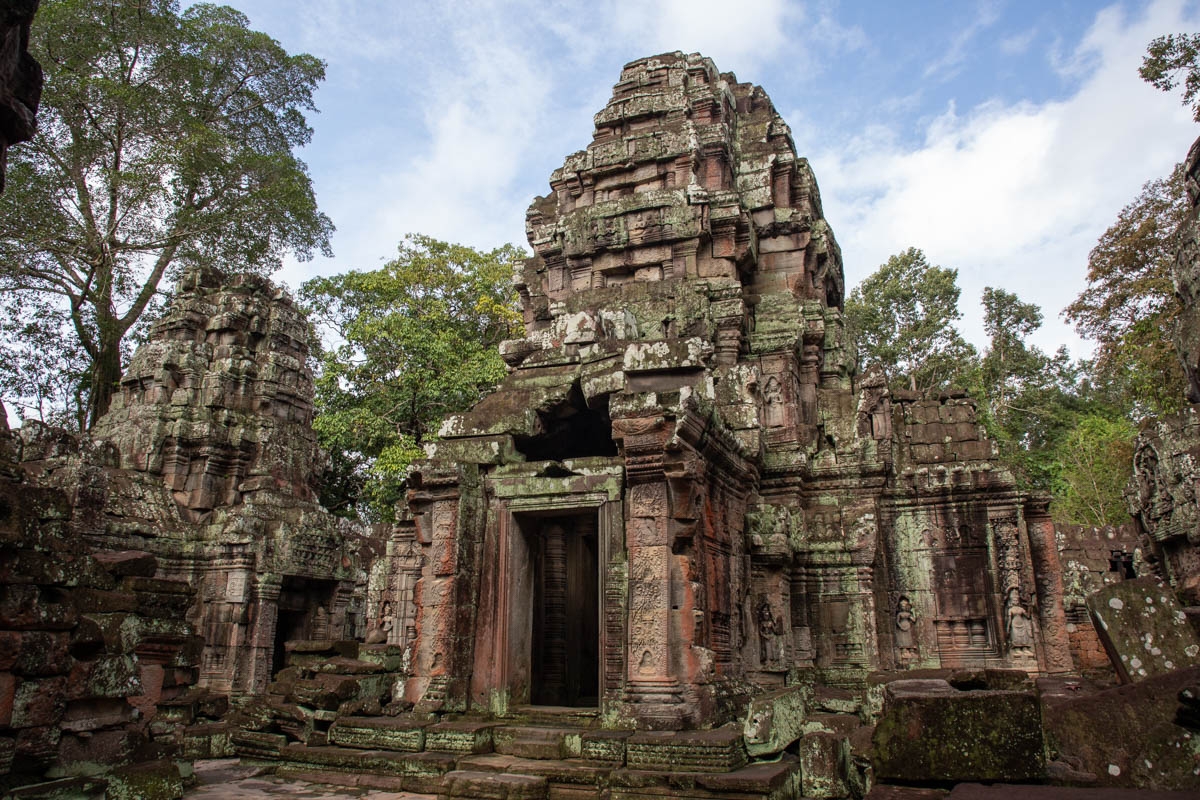
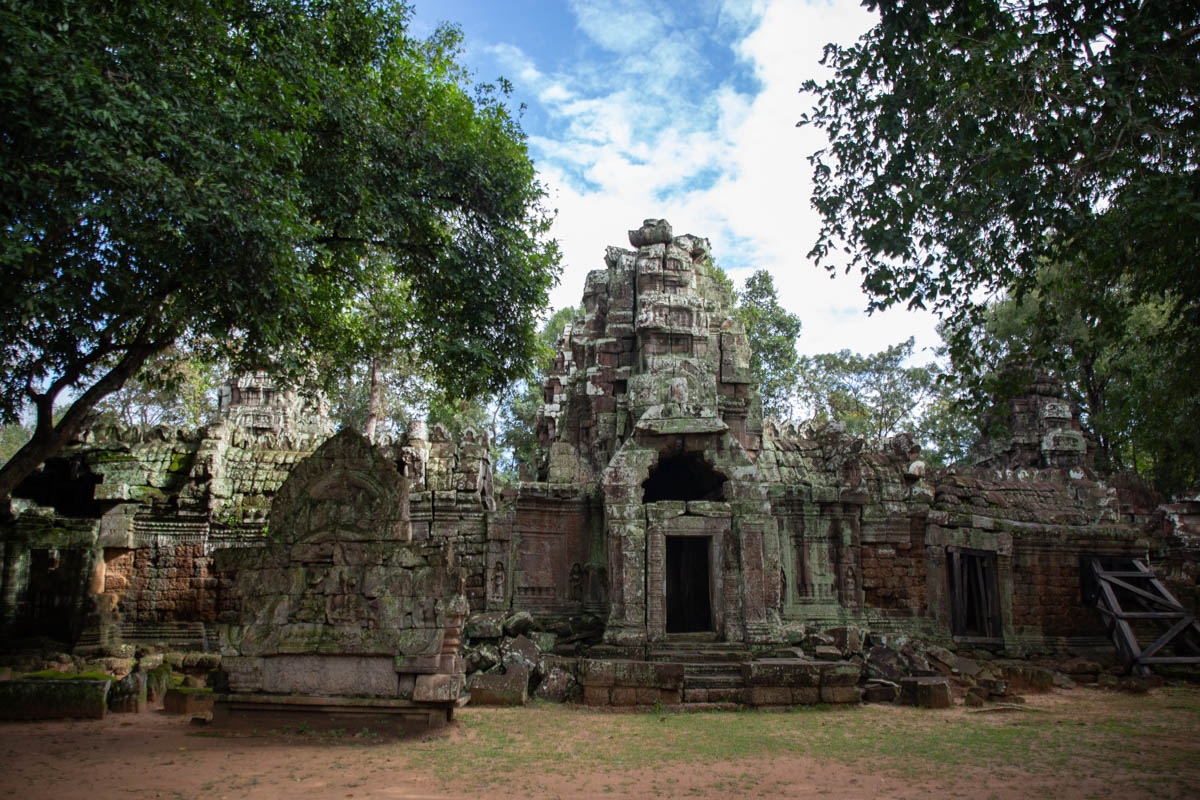

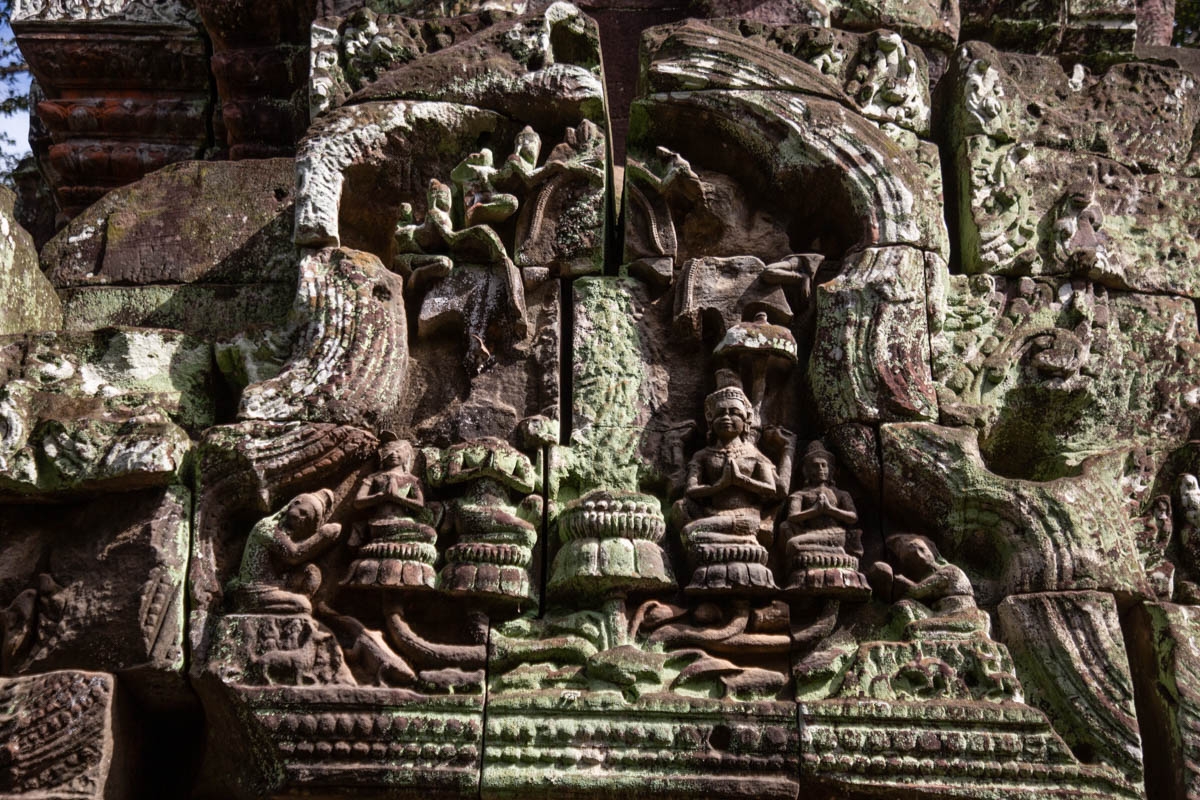
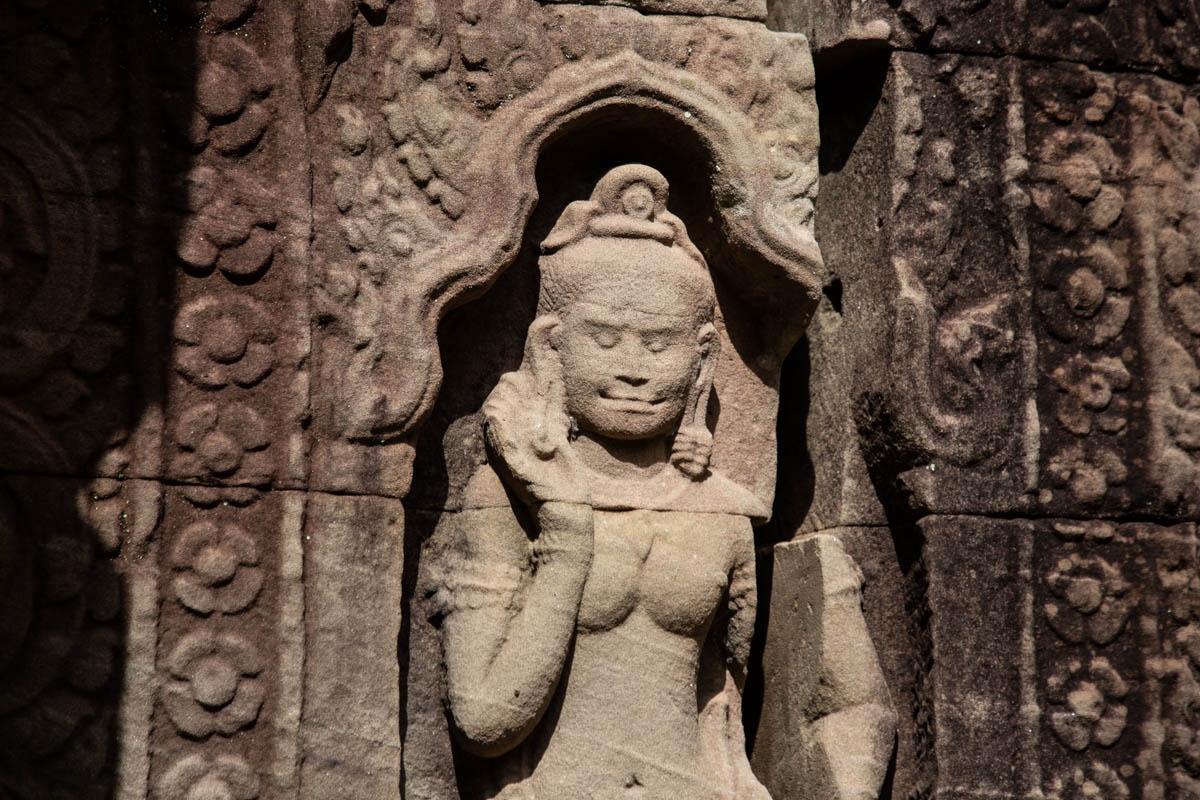


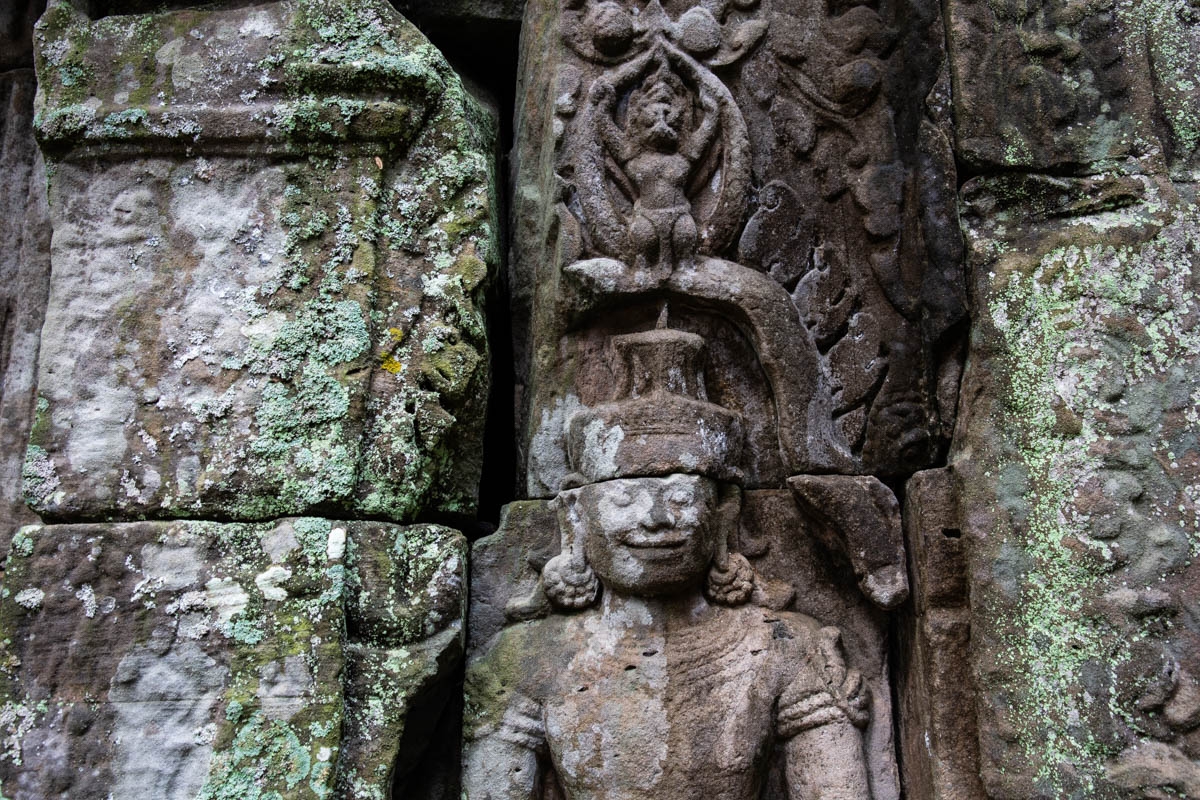
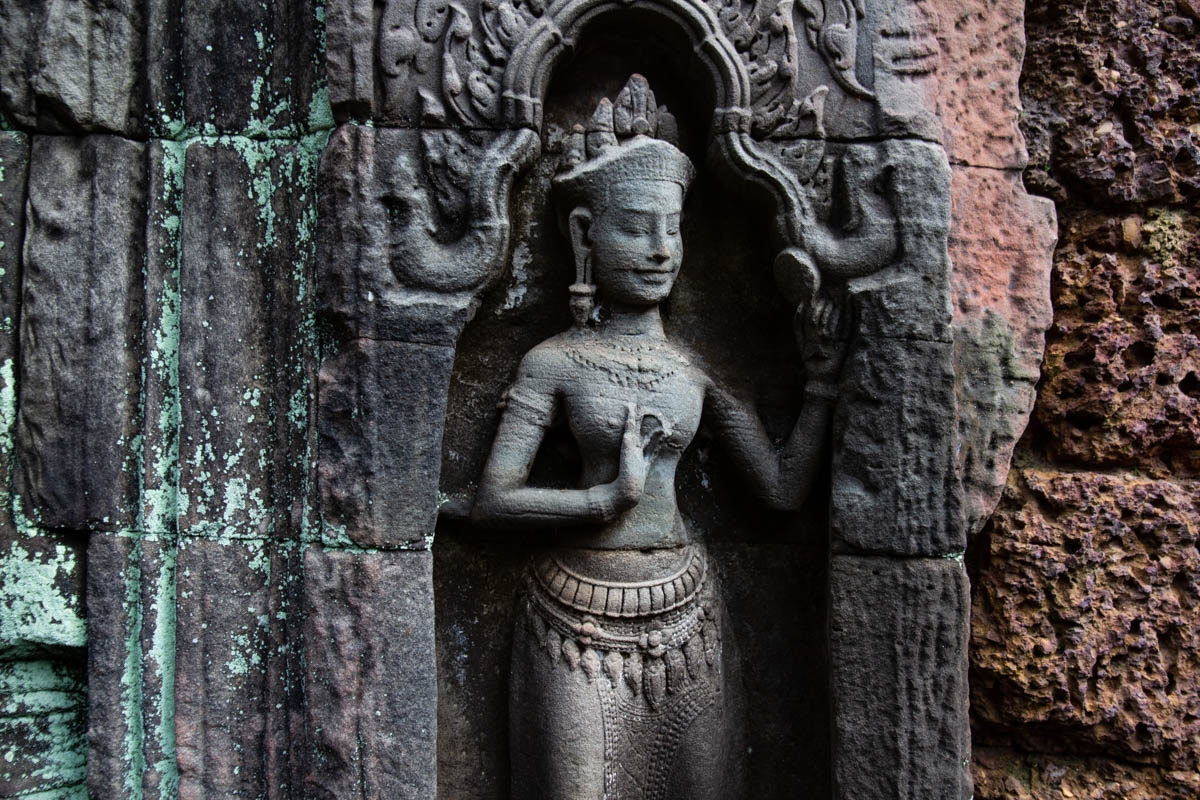
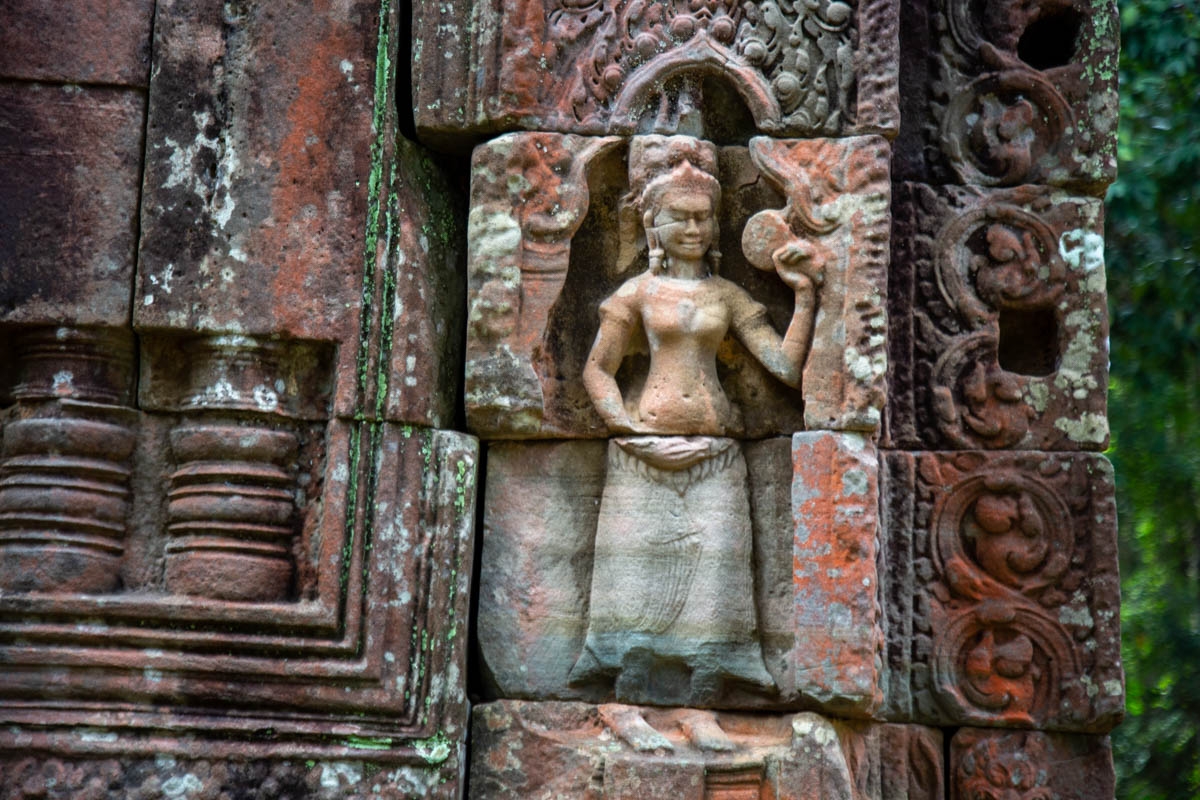
Layout & Walkthrough
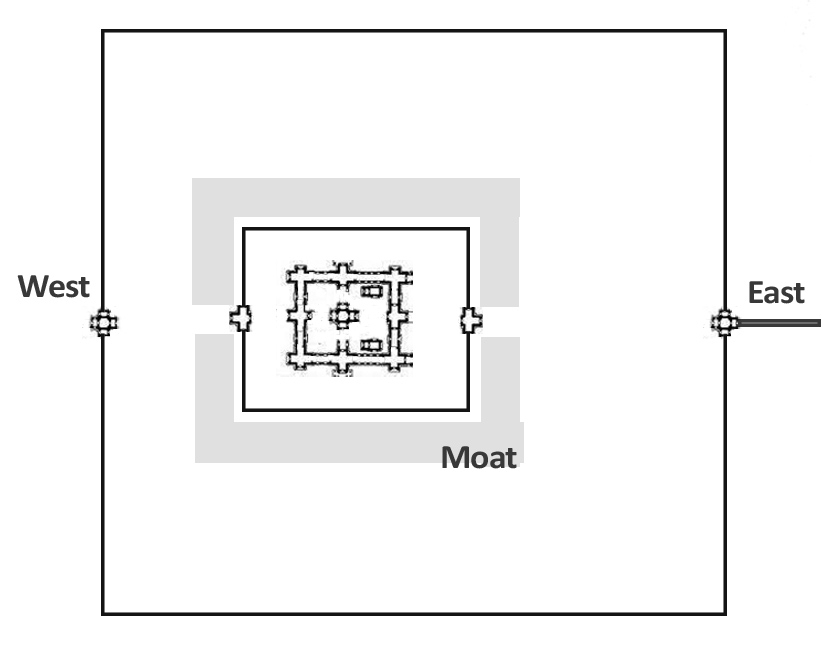
While today we enter from the western gate, originally the eastern gate (or gopura) would have been the main entrance, so, let’s begin from there.
The eastern entrance is preceded by a stone terrace crossing the outer moat which meets a walled enclosure approx 200m x 200 m with a charming gopura featuring the four smiling faces and an entry that is framed by the roots of a tree which rises out of the structure.
The gopura features bas-reliefs of devata, several pediments featuring figures in prayer and Lokesvara, many of which are framed again by the roots of the fig tree. There are lots of photo ops here.
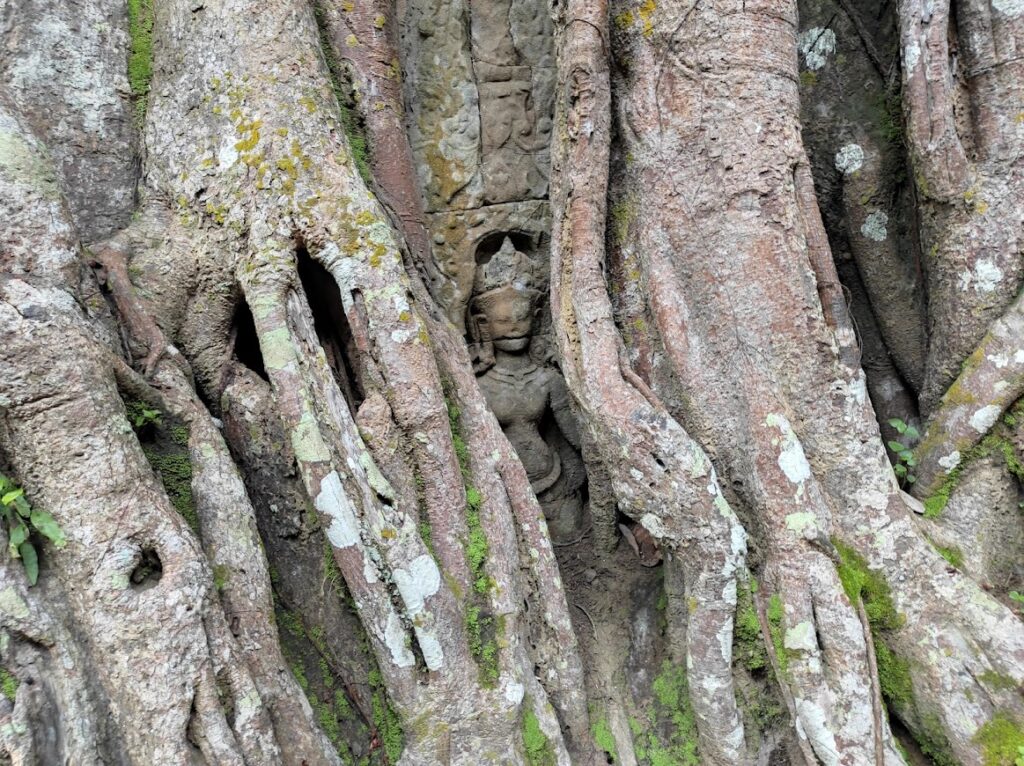

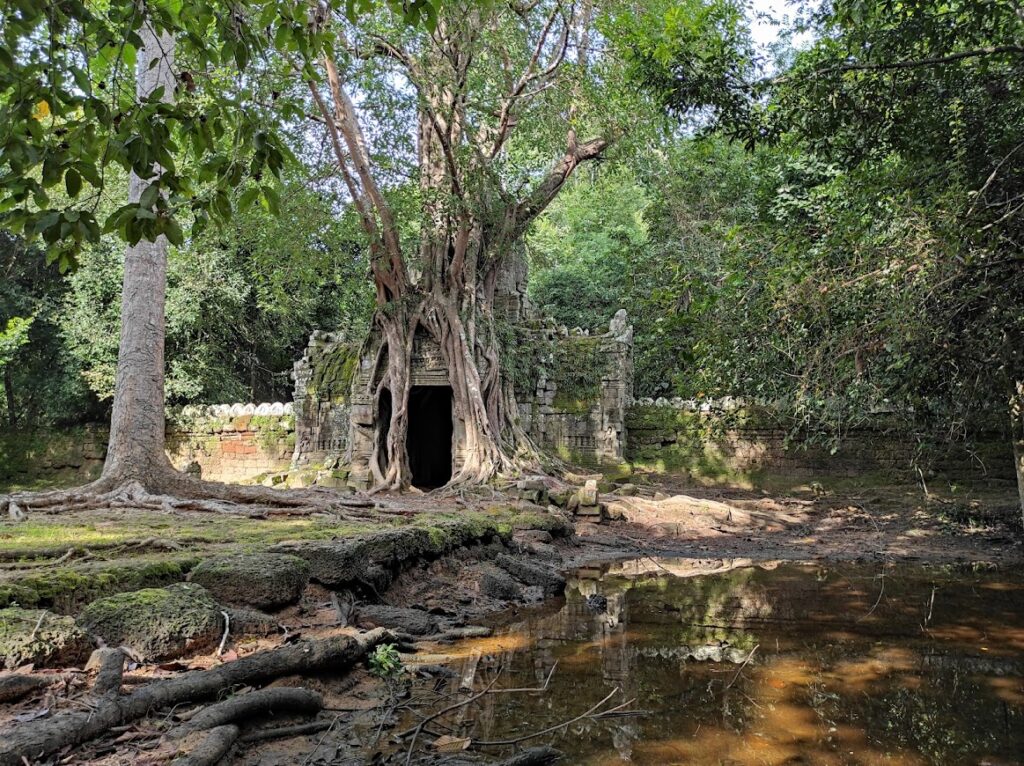
Continuing in a westerly direction from the east gopura is a large open area and straight ahead is the eastern entrance of the next enclosure (approx 20 m x 20 m) featuring gopura on each side. This enclosure features galleried walls, some of which have collapsed. Outside the north and south gopura are two large fallen pediments that have been reassembled and it’s a great chance to get up close to these artistic features that are normally up high and out of the line of sight.
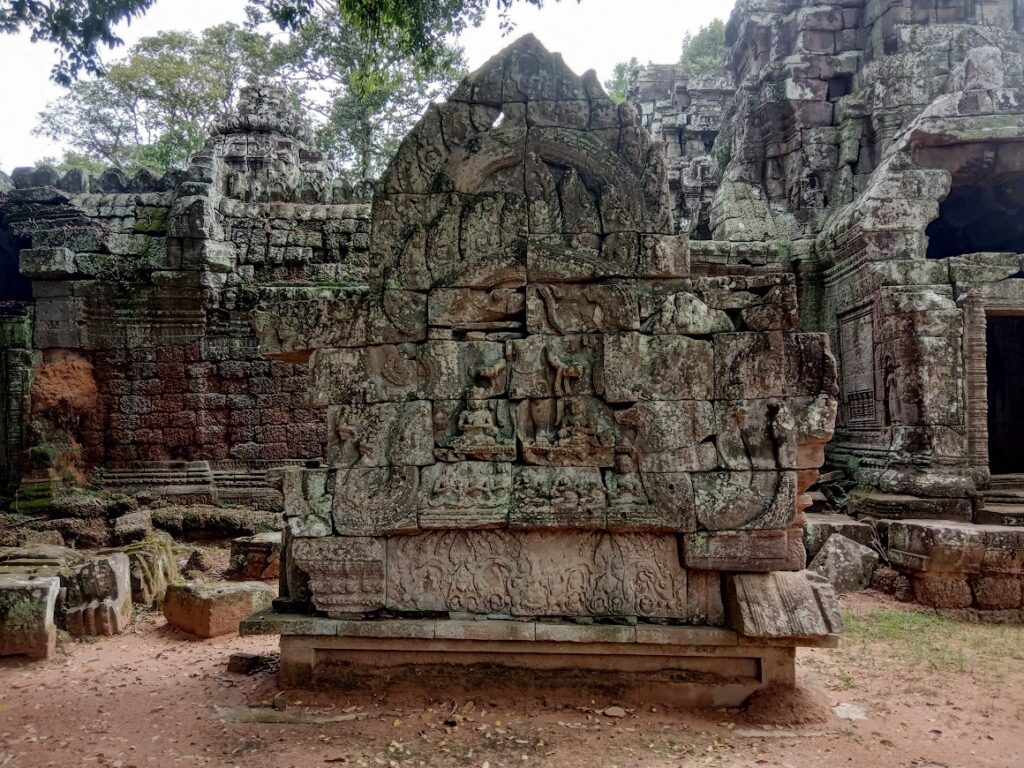
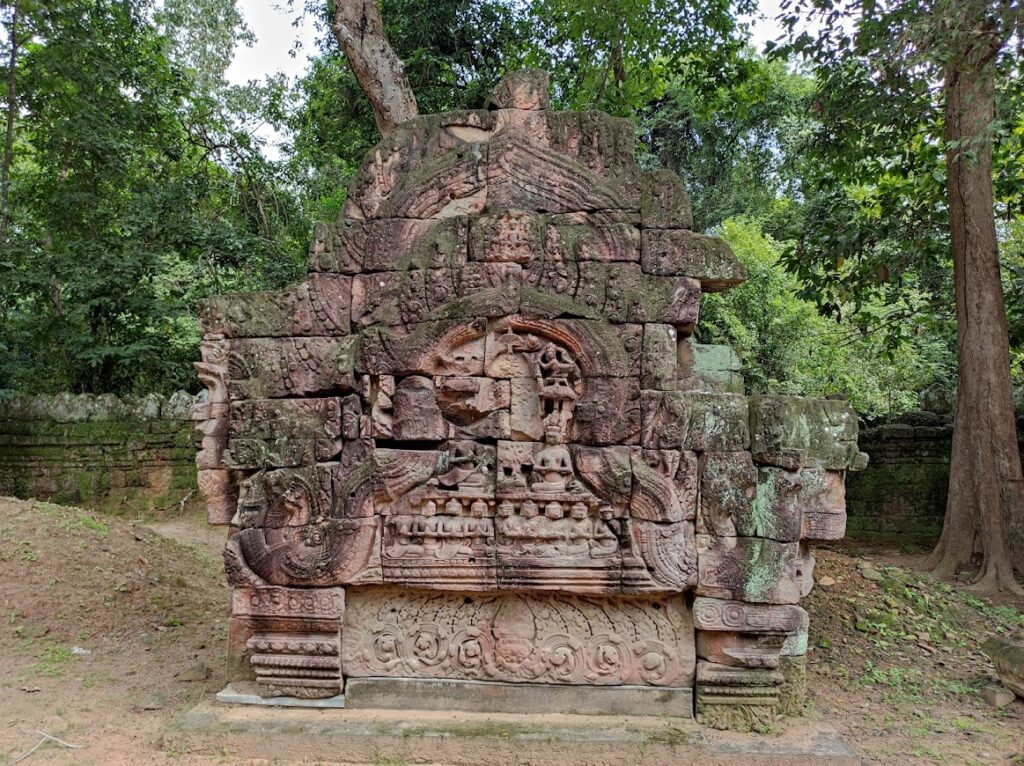
Heading inside, there are two library buildings and a central shrine all of which are ornately decorated with devata carvings and foliated scrolls with roundels and motifs as is typical of the era. Inside this central enclosure are another two pediments assembled on the ground. Some of the devata/Apsara bas-reliefs are quite interesting here too.
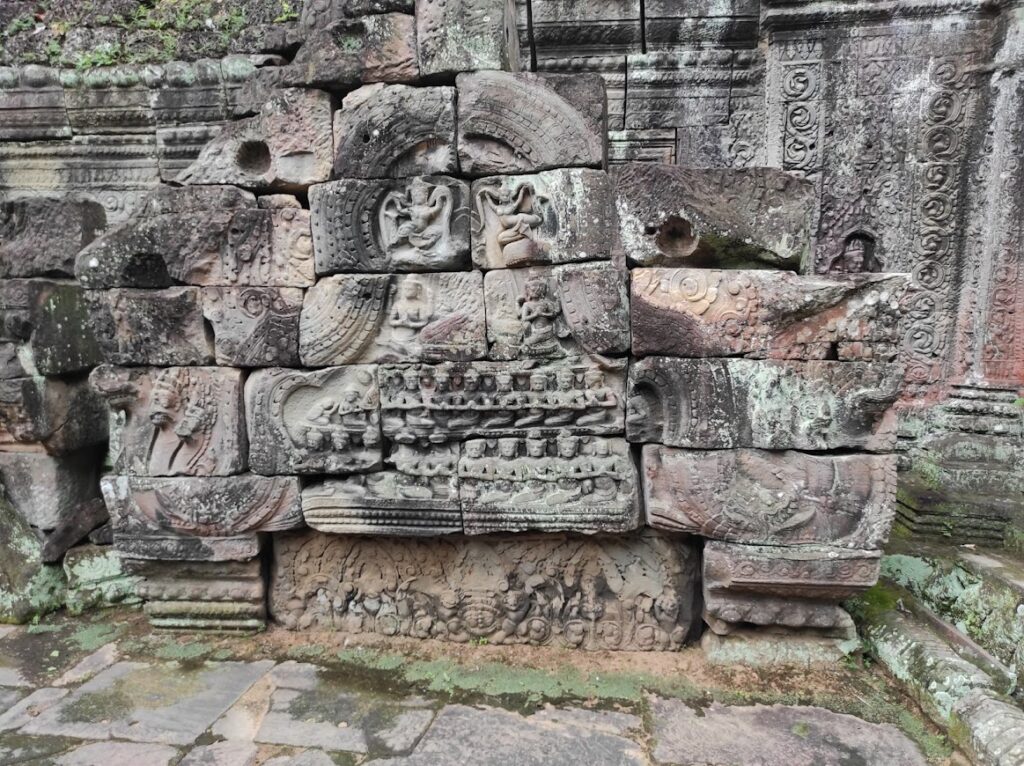
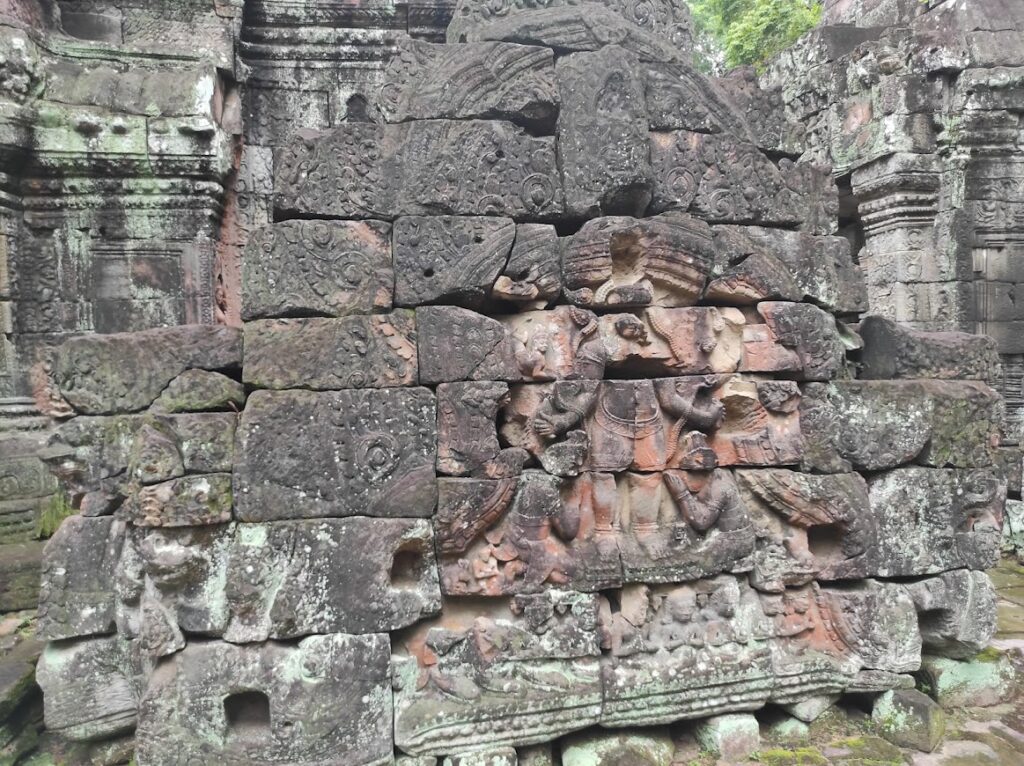
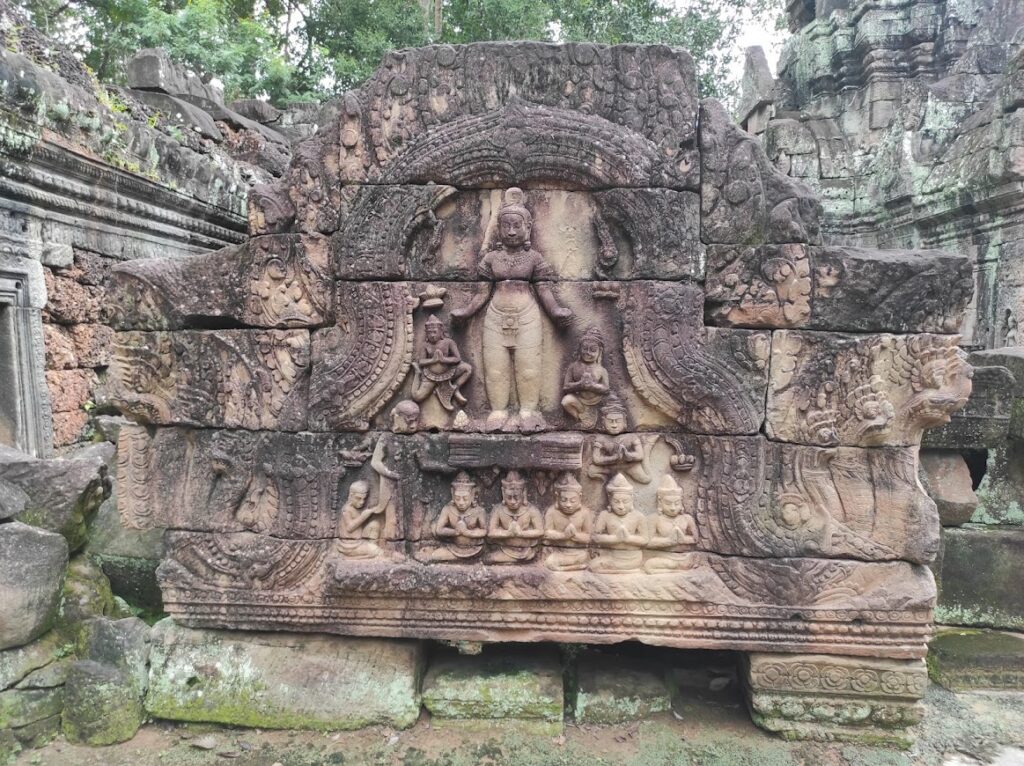
From there, you can explore some of the passageways of the galleried enclosure and head back out the western side to another terrace and the outer western gopura with the same smiling faces as it is on the eastern side.
History
While a foundation stele has not been found at Ta Som it is relatively easy to date due to its style that aligns with that of Bayon period, in the same group as Ta Prohm, Banteay Kdei, Preah Khan etc. It’s unmistakably attributed to the reign of king Jayavarman VII (reign 1181–1218 AD) and dated to the late 12-early 13th century.
Ta Som shares an east-west axis with the Jayatataka Baray, Neak Peak, and Preah Khan. Interestingly, scholars suggest that these sites were also connected hydraulically,
Clearance and minor restoration works were taken out in the 1930s by Henri Marchal.
Inscriptions
Take note as you pass through the doorways as many not only feature-rich tapestries but also inscriptions naming royal figures of the time.
- K. 460 – a group of short inscriptions found on the doorjambs of the central sanctuary, each gopura of the 1st enclosure, and the library. Providing the names of several lords and high priests – Cœdès 1951, p. 116
- K. 665 – labelled graffiti
- K. 1025 – recycled stone, labelled graffiti
- K. 1026 – recycled stone – 4 lines of Khmer
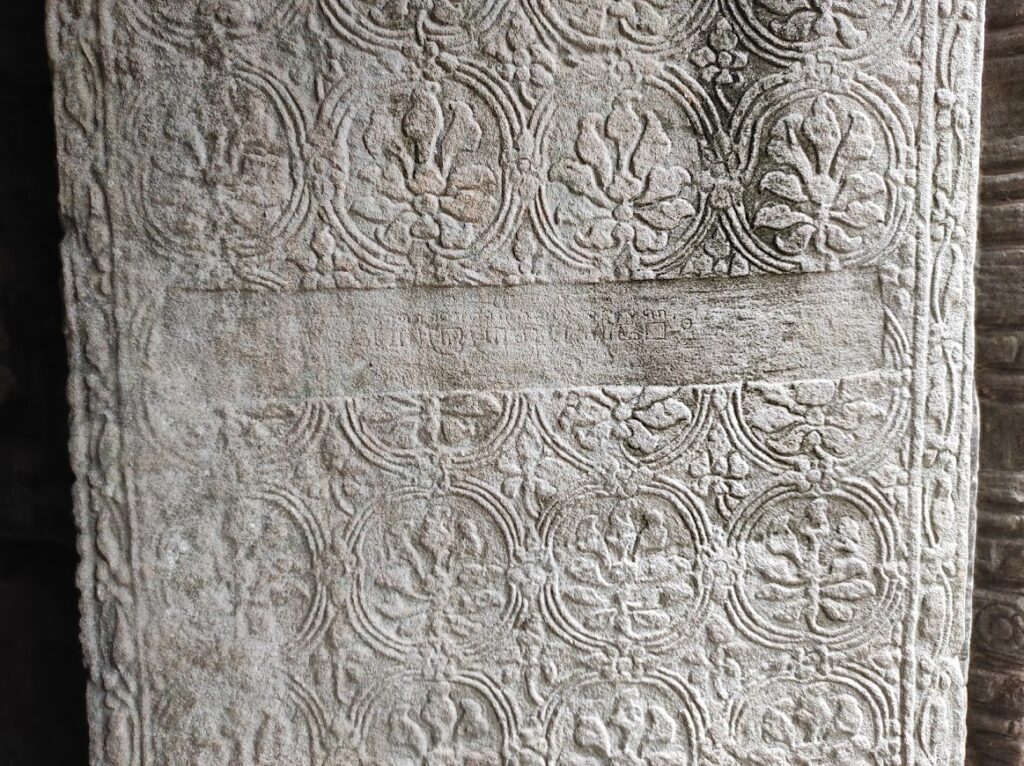
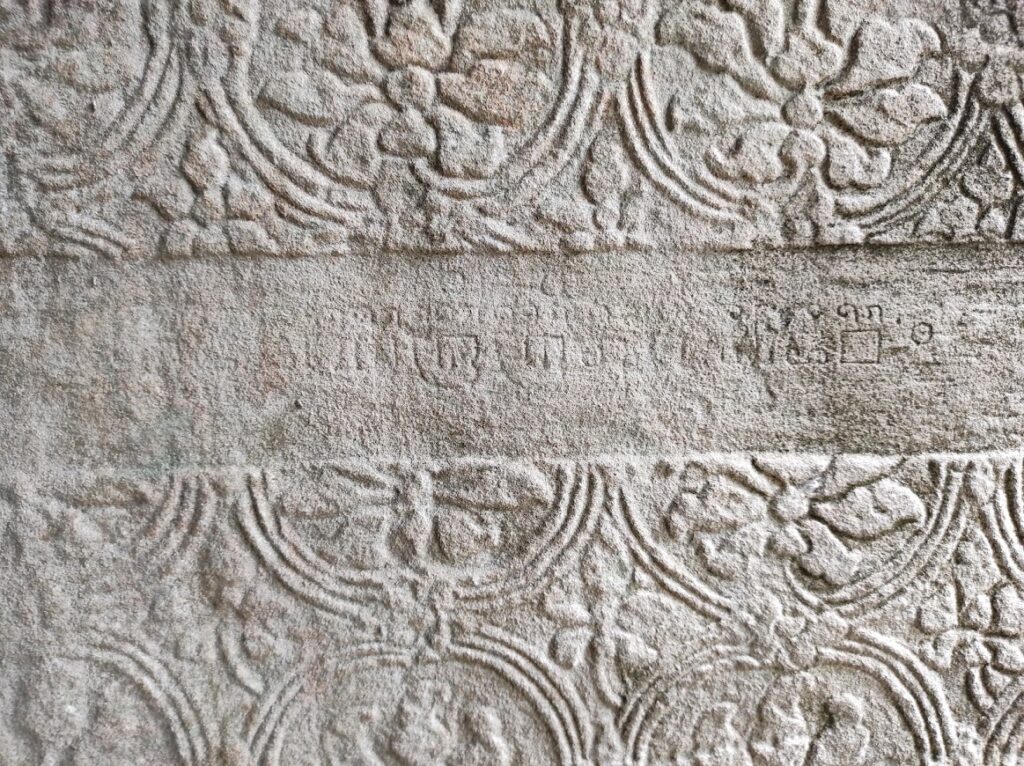
Map
Site Info
- Site Name: Ta Som (Pr.) Khmer Name: បា្រសាទតាសោម
- Reference ID: HA11696 | Last Update: September 25th, 2022
- Date/Era: 12th century
- Tags/Group: 12th Century, Angkor, Angkor Grand Circuit, Jayavarman VII, Map: Angkor's Top 30 Temples & Ancient Sites, Map: Top 100 Temples & Ancient Sites (Siem Reap), Temples
- Location: Siem Reap Province > Angkor Thum District > Leang Dai Commune > Leang Dai Village
- MoCFA ID: 412
- IK Number: 528
- Inscription Number/s: K. 460, 665, 1025, 1026

